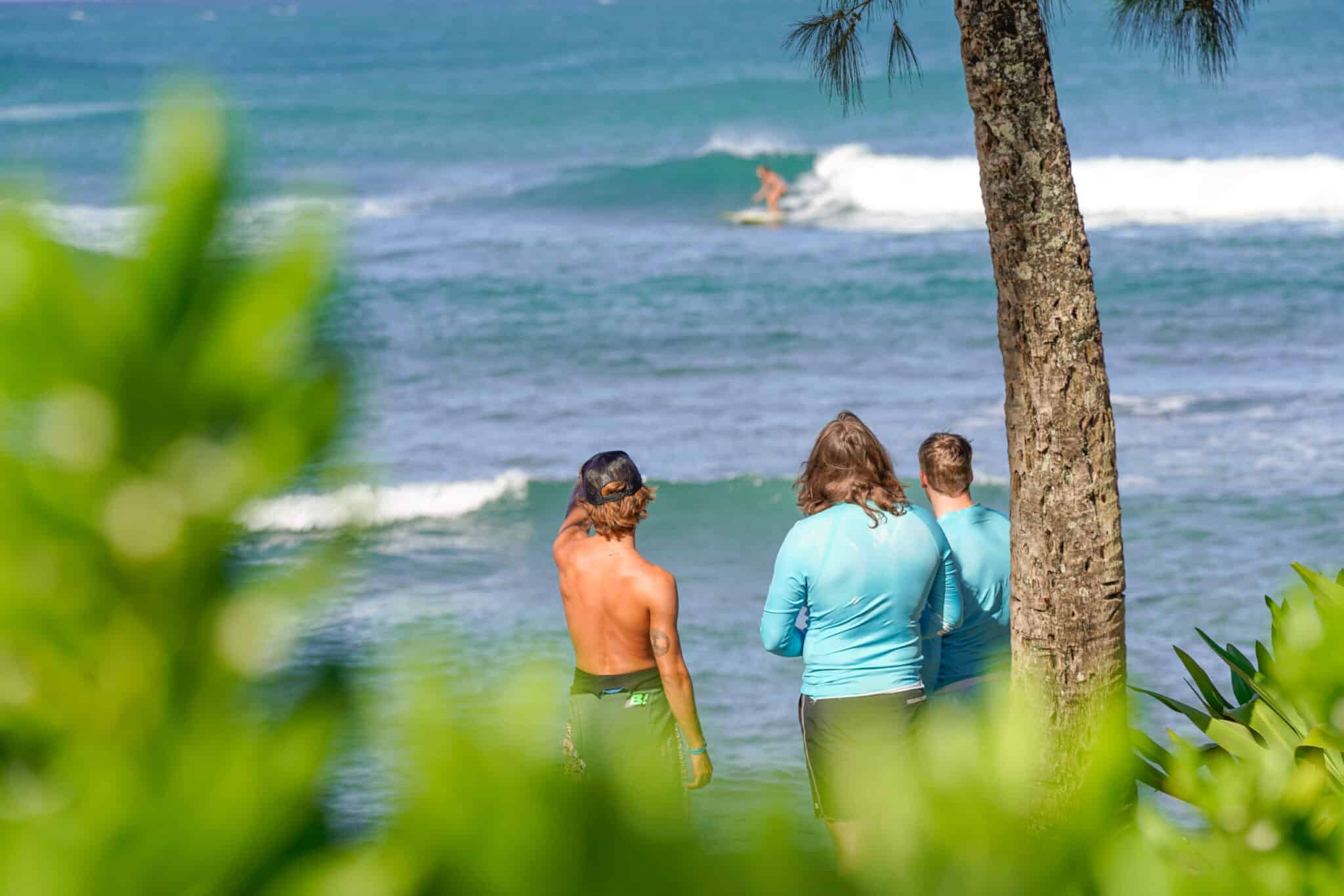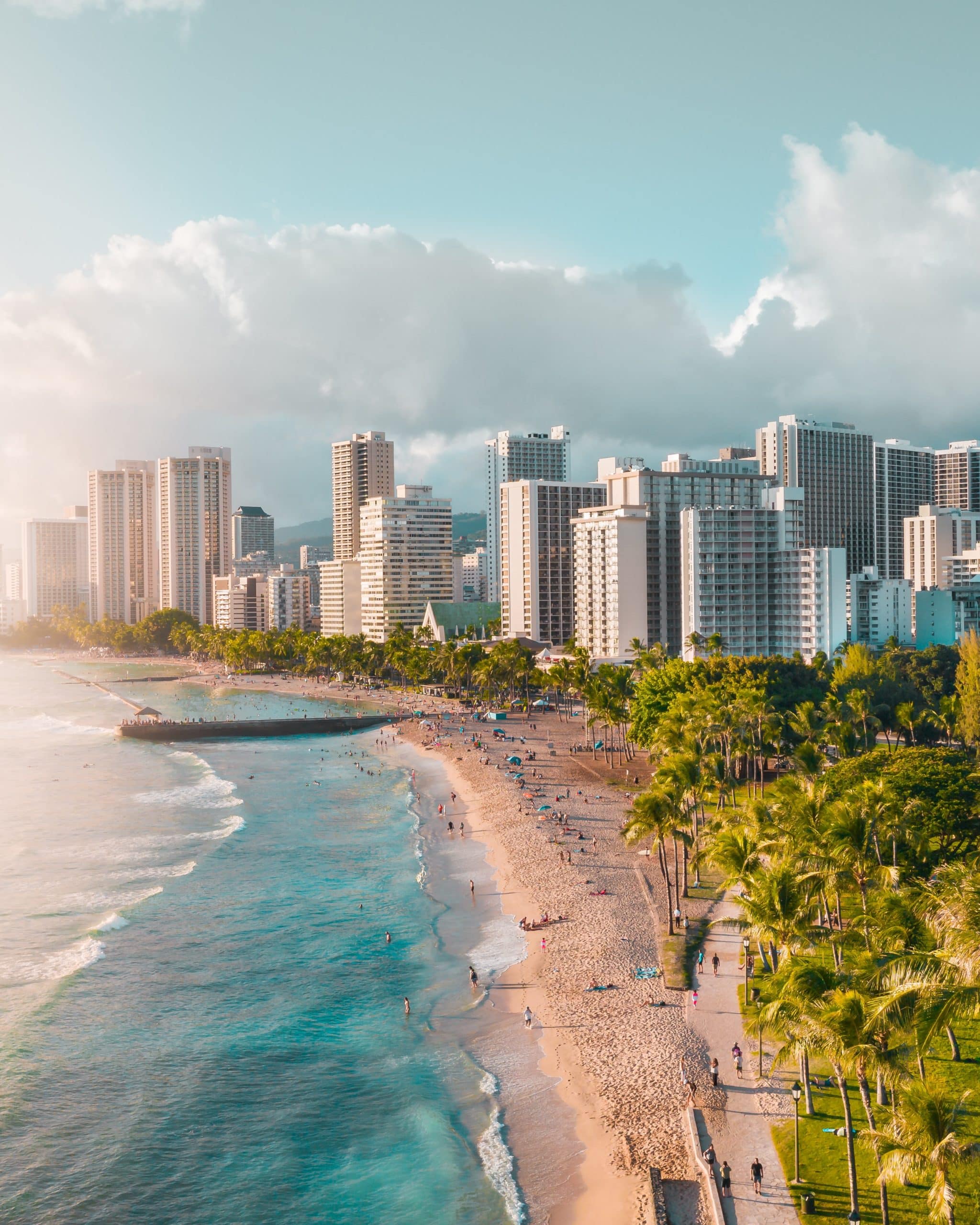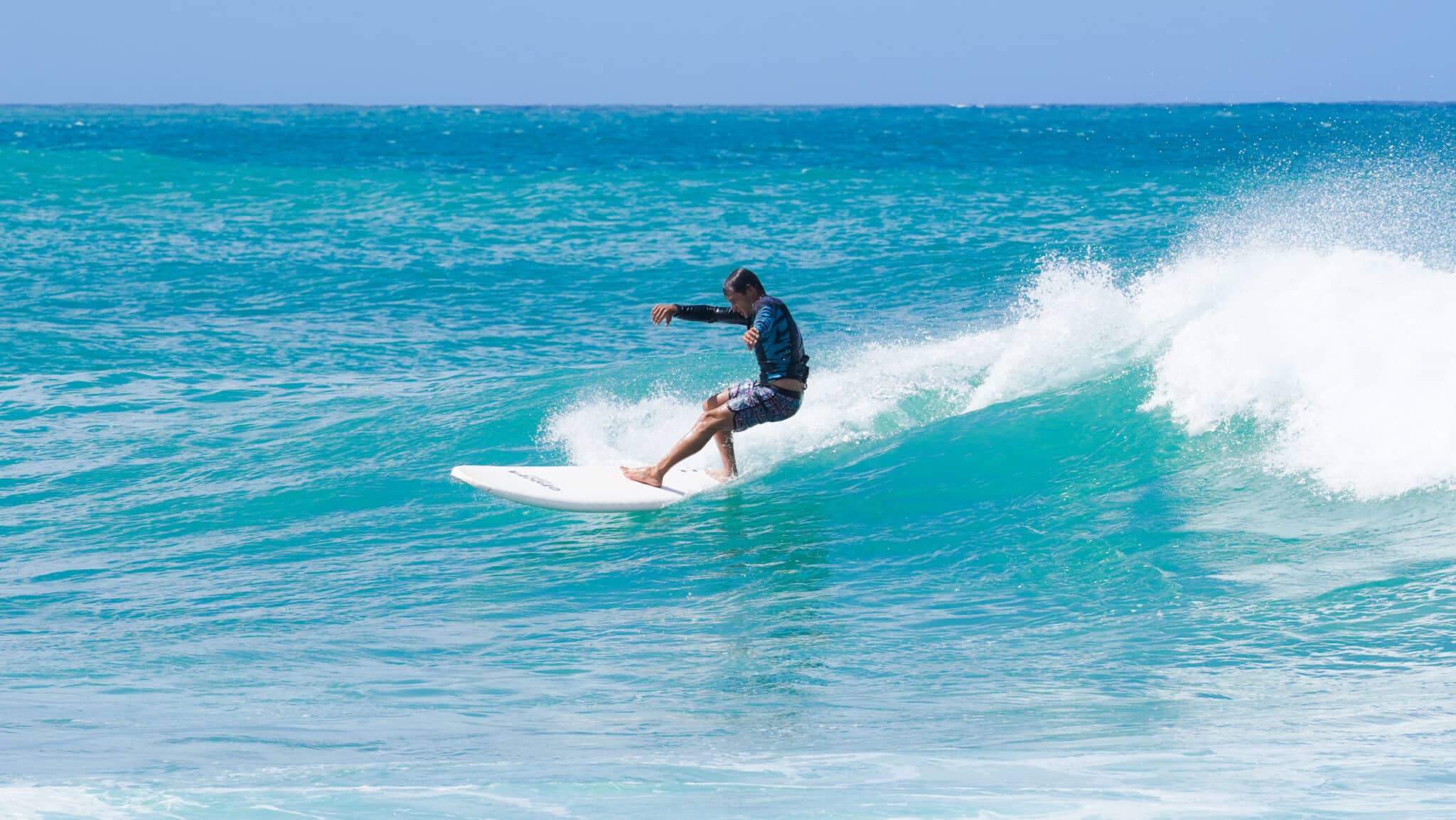
Unlike the mainland United States, in Hawaii, it’s always warm enough to wear boardshorts. Most days, the sun is shining, and the air is warm and tropical, no matter the season. For the majority of the year, there are waves to surf on the island, but there is still a clear swell season on Oahu’s North Shore. If you’re a new surfer, you’ll find beginner-friendly waves on the island year-round. Our Oahu surf school teaches our students in slow-rolling, soft waves so they can perfect their mechanics. If you’re an advanced surfer or you want to come to Hawaii to witness the world’s best surfers on the planet’s best waves, then you’ll need to travel to Oahu during the swell season. To find out more about Oahu’s swell season, continue reading below.
Best time to surf on the North Shore

It’s generally accepted that winter is the best time of year to surf in Hawaii. From late October to early March, mighty winter storms form in the Artic send swell towards the Hawaiian island chain. These powerful north swells then travel for thousands of miles across the Pacific until they meet Hawaii’s many reefs and sandbars, where they transform into world-class waves of unrivaled size and quality. On the North Shore, the winter brings the Seven Mile Miracle to life with more than just ample swell. There’s also the buzz of the surf world arriving in Hawaii for the various WSL events, the Vans Triple Crown, and to compete for the Wave of the Winter. While winters in Hawaii may not look like your winters at home, they are ripe with surfing tradition.
Best time to surf in Oahu on the South Shore

Oahu’s South Shore includes the heart of Honolulu, Diamond Head, and the historic Waikiki Beach. During the winter on the South Shore, you can expect small, beginner-friendly waves with the occasional flat day. During the summer, on the other hand, you’ll find plenty of swell brought to shore by the season’s frequent south swells.
Best time to surf in Oahu on the East and West Shores

Powerful trade winds come into the mix when you’re choosing surf spots on either the east or west coast of the island. During the summer, the trade winds blow strongly on the East Shore and create large and chaotic surf. During the summer on the west side of the island, swells can occasionally wrap neatly from the north or south to produce clean surf. In the winter, the trade winds reverse. The result is that the west side of the island has disorganized and often dangerous surf, while the east side receives clean swell wrapping around from either the north or the south.
If you’re visiting Hawaii for the first time and want to have an authentic surf experience, check out our surf school. Regardless of your skill level, we have a package that is right for you. First-time surfers can learn the basics in our North Shore Surf Lessons, while advanced surfers can tour the North Shore’s famed surf breaks in our Oahu guided surf experience. For all your hotel needs while on Oahu, check out the Turtle Bay Resort.
